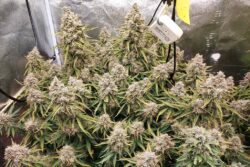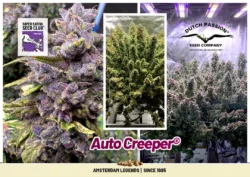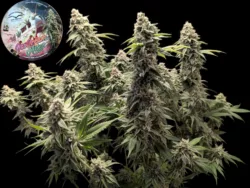What type of soil is best for autoflower cannabis?

Autoflower seeds have earned their reputation for being the easiest and fastest way to grow cannabis. Even first-time growers can produce heavy harvests of killer buds in 10-11 weeks. If you’re planning an autoflower grow you probably want to optimise as much of it as you can, including the soil, for optimised results. You may well be using a good quality modern LED grow light alongside the finest quality auto seeds. But what about the soil?
Read on to find out all you need to know to create the best soil for autoflowers. Advice will also be given on the best nutrients for autoflowers in soil as well as the best store bought soil for autoflowers.
The benefits of organic soil for cannabis
For many growers, the best soil mix for autoflowers has an organic foundation. Mineral nutrients (often clear, aqueous bottled solutions) will deliver excellent results and are the choice of many. But slow release organic nutrients and a large aerated grow container/root zone can massively simplify your grow. This can be especially attractive if you have had previous bad experience ‘burning’ your plants with excess mineral nutrients and want an easier grow experience in future.
Key soil substrates to consider for your autoflowers
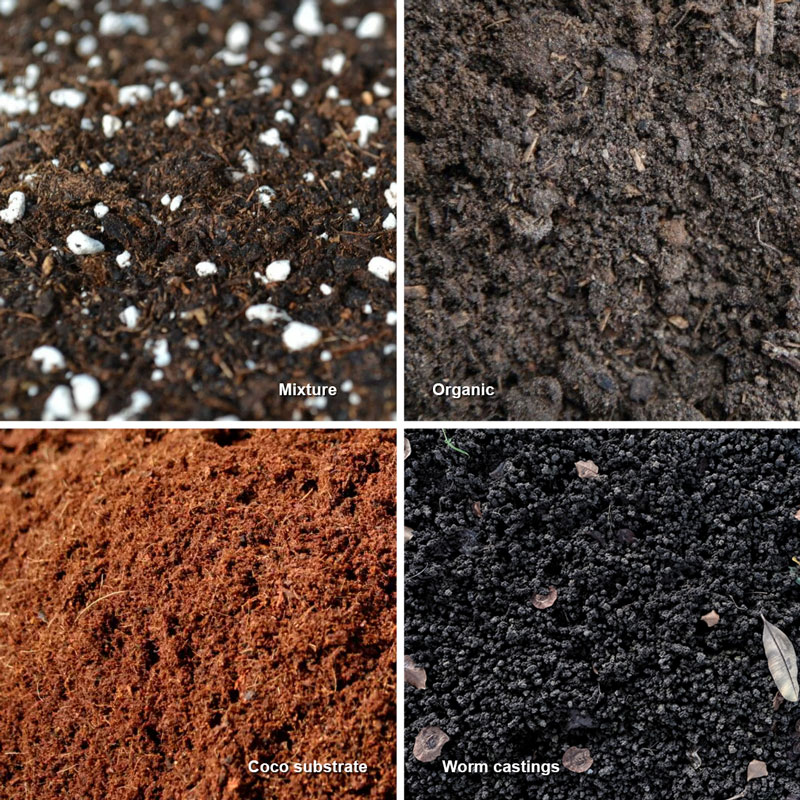
Autoflowering cannabis seeds should have the robustness to grow well in a range of soil types, just as they would in nature. There is no single perfect soil blend that outperforms all others, instead it may be more helpful to understand the key requirements of soil.
A good autoflower soil has to be aerated – cannabis roots thrive in an oxygenated medium. It also needs to hold moisture without creating excessively wet root-zone conditions. A good quality autoflower soil also needs to drain freely and allow ample root aeration and oxygenation. Of course the best autoflower soils also need to by highly nutritious to sustain plant growth. A good autoflower soil can contain many different components in varying ratios:
Coco
Coco fibre is a natural fibrous material produced from the husks of coconut. It is used widely in the cannabis industry both by home growers and legal, licensed professional growers.
| Pros | Cons |
|---|---|
| The free draining nature of coco fibre and the natural aeration make it a great grow option. You can add it to your soil to make it lighter and more aerated with better drainage and fast plant growth. Some growers use 10-20% coco fibre. Other growers like to use a 1:1 ration of soil:coco fibre. | Coco fibre offers very little nutrition to your plants, that means you will need to deliver all the nutrients if you’re growing in pure coco fibre. Often this will be in the form of a 2-part concentrate that you dilute with water. |
Biochar
Biochar is a general term used to describe any organic material which has been turned into carbon (‘carbonised’) under high temperatures between 300-1000°C. This process is done in the presence of little/no oxygen and is called ‘pyrolysis’. This removes all the natural bio-oils, gases etc and leaves a solid residue called biochar. It consists of at least 80% elemental carbon which is termed biochar.
| Pros | Cons |
|---|---|
| Biochar is often added to soil blends to improve plant health by helping neutralising excessive soil acidity. Biochar is also claimed to improve water and nutrient retention particularly in sandy soils. Improved drainage and aeration are also claimed. Each fragment of biochar can also provide a habitat for beneficial soil microbes. | Some, though not all, biochars can have a heavily alkaline effect on the soil. Although soil is to some extent self-buffering with regards to pH, a heavily alkaline soil tends not to suit cannabis. Some people are also concerned that biochar is increasingly made from non-sustainable sources. |
Perlite
Perlite is made from expanded volcanic glass, it is white and granular in appearance. It’s a popular soil additive used by gardeners of all types.
| Pros | Cons |
|---|---|
| Perlite improves drainage whilst holding a certain amount of water. Many growers add 10-20% of perlite to their soil mix. If your soil is a little too heavy for your preference, addition of perlite is a great way to improve aeration and drainage. Many people find perlite-rich mediums great for cuttings or cannabis seed germination. | Perlite and perlite dust can cause lung and eye irritation and should be handled with care. If you use too much it can make your grow medium drain moisture away too quickly. Perlite can also blow away from upper soil layers in strong wind. Some indoor growers find it hard to easily dispose of used soil with perlite in it, feeling paranoid that the perlite will indicate cannabis cultivation. |
Vermiculite
Vermiculite is a natural mineral made from a mix of Iron/Aluminium/Magnesium silicates. It expands when heated in hot furnaces. In this expanded form it holds water well and has found numerous uses by gardeners of all types for helping soil to retain moisture whilst increasing aeration of the soil.
| Pros | Cons |
|---|---|
| Vermiculte pH is close to neutral and holds high levels of water. Because it takes a long time to dry out, vermiculite allows your roots to stay moist for longer. Vermiculite is easy to mix with soil and other additives if you’re making a soil blend. | Many dislike vermiculite as a non-sustainable resource. It can also be one of the more expensive soil additives and if over-used it can make your autoflower soil blend a little too wet – which can in turn cause various issues and encourage fungi. |
So what is the best soil mix for autoflowers?
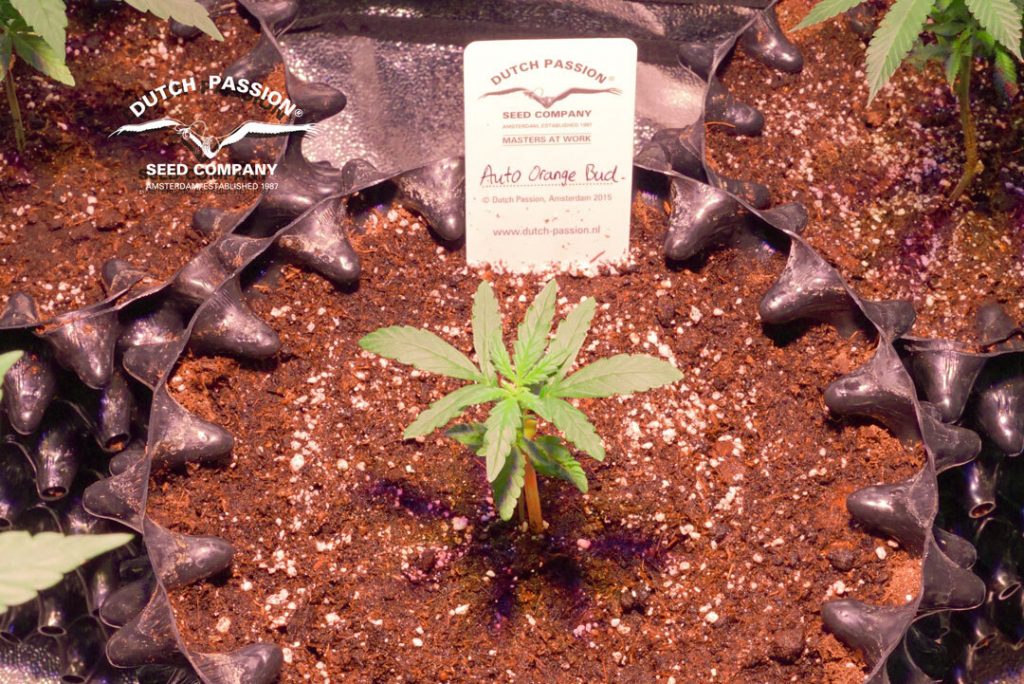
With so many different types of additive to consider it’s difficult to precisely and definitively state the best soil composition for autoflowers. Some growers like a soil with sufficient slow release nutrition to cover the plants requirements from autoflowering cannabis seed to harvest.
If that sounds like you then supplement your grow shop soil with slow release organic nutrients (e.g. BioTabs) and use a large aerated container. All you will need to do is add water. Other growers prefer to grow in e.g. a 1:1 blend of coco fibre:light-mix soil. Such mixtures offer high levels of root aeration but little nutrition. You will need to add your own nutrition, either via bottled mineral nutrients or slow-release organics.
Some growers buy pre-blended grow-shop soil and others will blend their own soil. There are lots of different ways to get a great autoflower soil. It is difficult to say that any one soil type is the very best. Remember good cannabis genetics have evolved to grow well under a range of conditions.
Typical basic home made autoflower soil
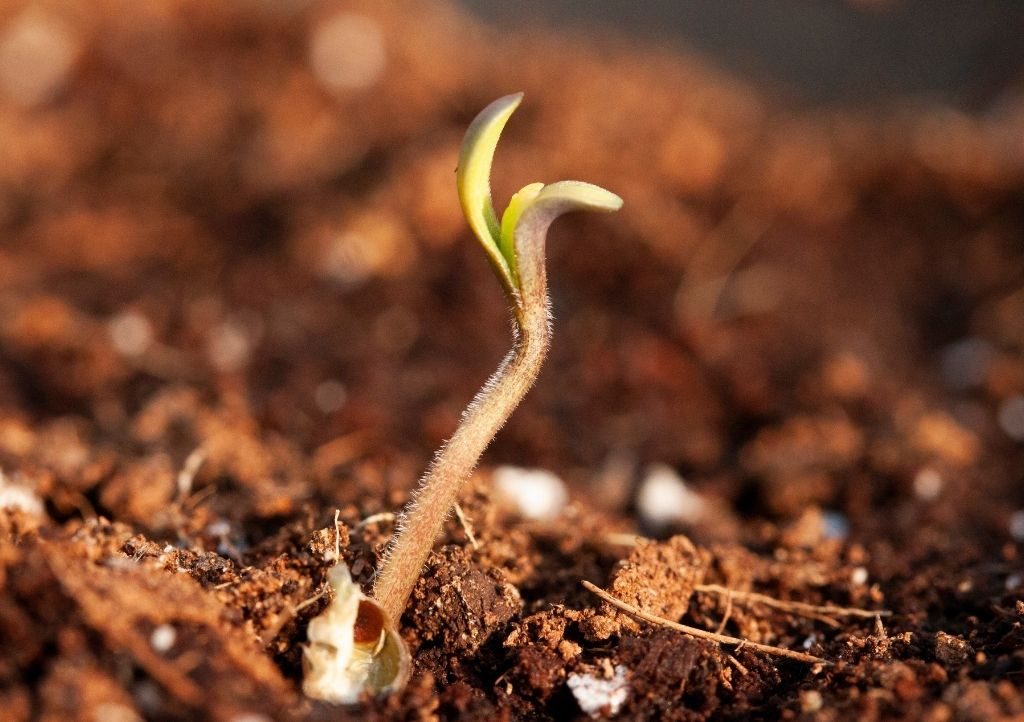
A basic autoflower soil could be inexpensively made simply by blending 80% supermarket soil with 10% coco and 10% perlite. That can be mixed simply by hand in a bucket. Combine that soil with a (preferably large) airpot or fabric grow sack and you have a solid foundation for your autoflower seed grow. Of course, those ratio’s aren’t fixed. You can add e.g. more coco and aim for a lighter soil mix.
More advanced growers might also supplement their autoflower soil with additives such as seaweed, biochar, bat guano, fish/blood/bone nutrients, dolomite, worm castings etc.
Related:
Best cannabis nutrients and feeding schedule
How to tell if your soil is healthy or unhealthy?
If you prepare your own soil by hand to a proven recipe then you will always feel confident that it is a healthy soil. Likewise, it you regularly buy a particular brand of pre-mixed soil you can also feel confident that it will produce healthy plants. It’s difficult simply by visual inspection alone to know whether a soil will produce healthy or unhealthy plants. The experienced grower will be able to get a general idea of soil quality through the appearance and texture of the soil. But the best way to assess the quality of your soil is to understand the composition of it.
Signs of a healthy soil

A healthy soil is free draining, light, airy and with an open texture. It also will contain sufficient nutrients to sustain your cannabis plant all the way through to harvest. Beneficial bacteria will be present improving the soil and releasing more nutrients to the plant roots. The soil may contain coco fibre (or similar) to keep a light structure.
Perlite, vermiculite, cork and similar additives are also often used. One of the best signs of a healthy soil is the appearance of your plants. With a healthy soil you should have lush, verdant green growth above ground. Just as importantly you will have a large root ball and healthy root zone below ground
Signs of a bad soil

Bad soils are often heavy and dense with poor drainage. Roots find it hard to thrive in such conditions, especially if they are waterlogged and low in oxygen. Experienced growers will already know that a healthy plant can’t grow above ground if the roots are severely compromised below ground.
Bad soils can also be low in certain minerals, meaning that plant growth (and yields) can be compromised. Poor quality autoflower soils may also produce plenty of fungus gnats which will be a nuisance (or worse) during your grow.
If you have found fungus gnats a nuisance in your grow room try looking for a soil blend that doesn’t use wood. Some specialist soil blends use no wood chips at all and can be pretty much free of fungus gnats. Use of UVB supplemental light in bloom is another useful way to suppress (though not necessarily eliminate) pests.
Combine the best organic soil for autoflowers with the best containers. Bigger can be better!
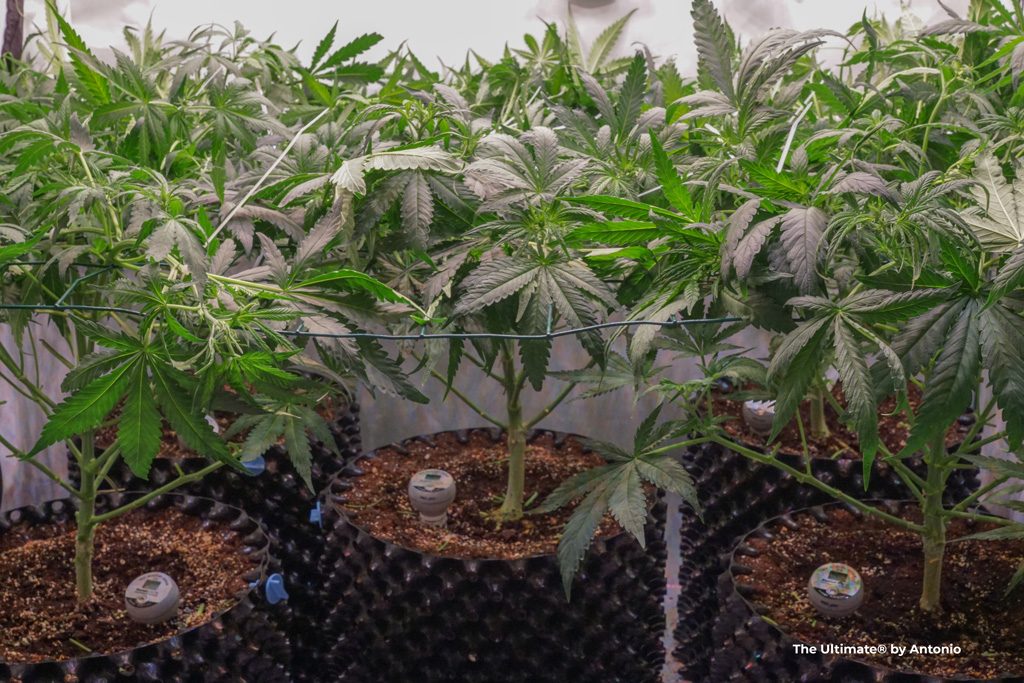
Many top growers find a solid way to grow autoflowers is to use a large 30-50+ litre airpot or 30-50+ litre felt grow sack in combination with a good quality soil blend and slow release organic nutrients.
Airpots or fabric sacks allow plenty or root aeration. The increased oxygenation of the root zone supports faster root growth and superior growth above ground. If you’re aiming to fully optimise your autoflower seed grow then use a plant container such as an airpot or fabric grow sack.
BioTabs slow release organic nutrients are particularly recommended and fully proven over many years of use. Using them will mean you may only need to add water throughout the grow. Slow release organic nutrients allow the grower to avoid the pitfalls and stunted growth that result from yoyo-ing between overfeeding and underfeeding. A fully optimised autoflower grow can also be a really simple one with little to go wrong!
Best soil for autoflowers: FAQ & key takeaways
There is probably no single soil mix which is best for autoflowers. A healthy, high quality autoflower soil can be created from a variety of ingredients. Good quality autoflower seeds with solid genetics should thrive across a range of conditions and grow well even in soil-free (hydroponic) conditions.
It’s good advice, especially for the less experienced grower, not to get too hung-up on defining the best soil. Instead, it’s more helpful to remember the basics: Good drainage, good root aeration and good nutrition. When a soil (or any grow medium) has all these then you can expect solid plant growth.
What is best between a store-bought vs DIY soil for autoflowers?
Many grow shops (and online suppliers) offer bags of pre-mixed soil blends. These come in varying price ranges and offer different types of additives. Bat guano, worm castings, dried blood, fish and pulverised bone are common additives to the classier blends. So too are calcium and magnesium-rich minerals such as dolomite. But you can also add these yourself quite easily to your own autoflower soil blends if you prefer the DIY approach.
How to plant autoflower seeds directly in soil?
When planting autoflower seeds directly in soil put your seed around 10mm below the surface. Ensure that the soil is moist and that the surface is also moist. You may wish to put some transparent kitchen film over the plant container to try to keep the soil surface moist and/or occasionally mist it. Remove any kitchen film when your seed has germinated.
What is the best soil brand for autoflowers?
It’s difficult to recommend one particular brand over the rest. In truth, many that grow autoflowering cannabis seeds get great results across a broad range of soil types.
How much soil does an autoflower need?
How much soil does an autoflower seed need? You can grow an autoflower seed in a 1 litre container if required, but don’t expect a large plant or significant yields. Most serious auto growers would consider a 15 litre airpot/felt-sack a minimum. For a larger, more optimised result bigger is better; 30-50 litre containers aren’t excessive if you have the space and can afford the extra soil costs.
How long for autoflower seeds to germinate in soil?
Most of the time you will find autoflower seeds germinate in soil after a 4-7 days or so. Occasionally seeds can take a couple of weeks to germinate.
The best way to geminate your cannabis seeds is between two moist (but not soaked) cotton pads. Once the autoflower seeds have germinated you can place them (root down) into holes in your soil.
Related:
The best way to germinate cannabis seeds, moist cotton pad method
What are the best nutrients for autoflowers in soil?
Autoflowers use the same nutrients as feminised strains in growth and bloom. That means you can use your existing/preferred brand of nutrients. No special nutrients or additives are required when growing autoflowering cannabis seeds.
What’s best soil for autoflowers uk and outdoor growing?
Any UK growers planning an indoor or outdoor grow should use the same proven principles when it comes to soil. Aim for nutritious soil, well textured, with a balanced ability to drain whilst holding some water.
What are the key factors to watch for a healthy soil?
The best soil for autoflowers has to be nutritious with ample nutrient supplies for growth and bloom. It also needs to be moist but free draining
Autoflower soil guide – is super soil good for autoflowers?
Some grow shops sell living soil, sometimes called super soil. These are often more expensive and have been produced organically with beneficial bacteria, mycorrhiza etc. If these soils have been well prepared they will be as good as anything you might have made at home. Whether they are worth the price is a different question!
Can you grow autoflowers in regular soil?
Yes, cannabis grew successfully in the wild before mankind arrived. In many parts of the world cannabis still grows naturally without any human intervention.




